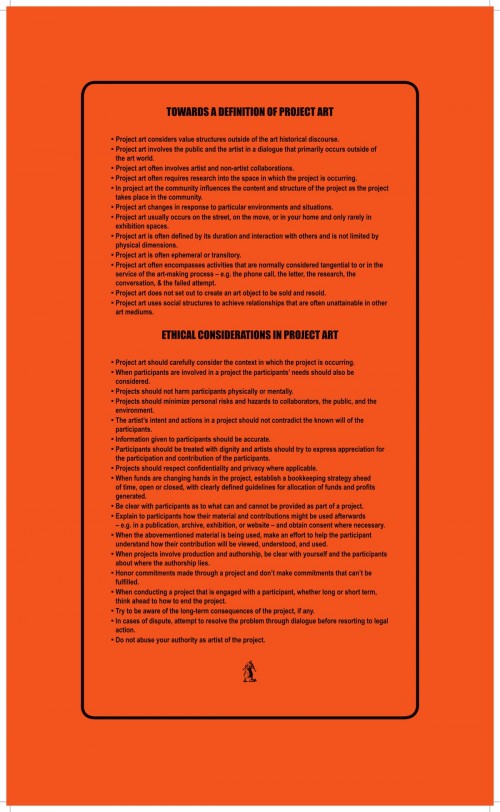| Lee Tracy |
|
PROJECT ART Our fleeting world takes presence and navigational skill. These are the two reasons why I am drawn to project art.  Mechanics of spinning plates 80″ x 102″ charcoal and pastel on paper Project art offers the element of time and patience. An artist can elect to take years, even decades, to complete a work. Projects tend to forge assorted interaction, including opportunities to introduce a participatory ingredient. Project art is a relaxed curiosity accompanied by a genuine responsiveness to our changing reality. Works like the World Rivers Project and The Demandments, or even collecting teacups, where others participate in a portion of the process, create relationships of varied intensity. These connections keep me attached to this world and plant me in a moment. While grounded, I form a lasting memory or a kind of fable. Participatory projects require awareness of action and enables me to experience the higher human qualities presented in it. Participants can experience this too. Project art presents a method of practice to commune with this world and belong in it with a degree of fascination. Ben Kinmont‘s manifesto, printed by Antinomian Press (and typed out below), is about participatory art and the use of kindness. This manifesto can easily be a template for an attitude that propels daily life. It states:  Ben Kinmont’s manifesto about participatory art TOWARDS A DEFINITION OF PROJECT ART – Project art considers value structures outside of the art historical discourse. – Project art involves the public and the artist in a dialogue that primarily occurs outside of the art world. – Project art often involves artist and non-artist collaborations. – In project art the community influences the content and structure of the project as the project takes place in the community. – Project art changes in response to particular environments and situations. – Project art usually occurs on the street, on the move, or in your home and only rarely in an exhibition spaces. – Project art is often defined by its duration and interaction with others and is not limited by physical dimensions. – Project art is often ephemeral or transitory. – Project art often encompasses activities that are normally considered tangential to or in the services of the art-making process – e.g. the phone call, the letter, the research, the conversation, and the failed attempt. – Project art does not set out to create an art object to be sold or resold. – Project art uses social structures to achieve relationships that are often unattainable in other art mediums. ETHICAL CONSIDERATION IN PROJECT ART – Project art should carefully consider the context in which the project is occurring. – When participants are involved in a project the participants needs should also be considered. – Projects should not harm participants physically or mentally. – Projects should minimize personal risks and hazards to collaborators, the public, and the environment. – The artist’s intent and actions in a project should not contradict the known will of the participants. – Information given to participants should be accurate. – Participants should be treated with dignity and artists should try to express appreciation for the participation and contribution of the participants. – Projects should respect confidentiality and privacy where applicable. – When funds are changing hands in the project, establish a bookkeeping strategy ahead of time, open or closed, with the clearly defined guidelines for allocation of funds and profits generated. – Be clear with participants as to what can and cannot be provided as part of a project. – Explain to participants how their material and contributions might be used afterwards. – e.g. in a publication, archive, exhibition, or website- and obtain consent where necessary. – When the above mentioned material is being used, make an effort to help the participant understand how their contribution will be viewed, understood, and used. v – When projects involved production and authorship, be clear with yourself and the participants about where the authorship lies. – Honor commitments made through a project and don’t make commitments that can’t be fulfilled. – When conducting a project that is engaged with a participant, whether long or short term, think ahead to how to end the project. – Try to be aware of the long-term consequences of the project, if any. – In cases of dispute, attempt to resolve the problem through dialogue before resorting to legal action. – Do not abuse your authority as artist of the project. |
THE MURMURING OF MISSING PIECES News or no news. Ponderings and acceptances. Fresh starts, revelations, and beauty. 1 2 3 4 5 6 7 8 9 10 11 12 13 PAST POSTS (Selected) Anatomy of an idea Tea Takes Time Speak To Me, Speak For Me In Progress Project Art Out Of This World Course Of Action |
| Lee Tracy |